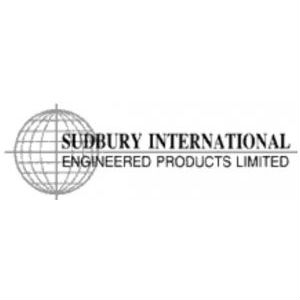 Design standards for Sudbury International expansion joints: temperature, pressure, leaks
Design standards for Sudbury International expansion joints: temperature, pressure, leaks
July 17, 2019 REDWIRE is news you can use from leading suppliers. Powered by FRASERS.
Posted by Sudbury International Engineered Products Limited
Expansion Joints, (fabric, metal, rubber, dog-bone), Automatic Recirculation Valves For Pumps, Specialty Sootblowers, Se... Read more
Subscribe
Free REDWIRE e-newsletter

Sudbury International supplies high-end expansion joints for ducting systems.
Sudbury International Engineered Products Limited supplies quality ducting expansion joints for industrial applications. These non-metallic joints are designed with a number of important considerations in mind. Among the criteria designers have to consider are components, anatomy, function, clamping devices, cavity pillows, frames, and baffles (flow liners).
This is not the end of the list; other important design considerations for Sudbury International’s quality ducting expansion joints include system temperature, system pressure, and leakage.
Four areas of system consideration
System temperature is a key design consideration. High-temperature ducting systems are often insulated to save energy and help stop internal condensation and ducting corrosion. The thermal barrier and additional retaining layers of a multi-layer fabric element has to remain strong and flexible when they are exposed to extreme temperatures.
The four key areas for system consideration for Sudbury International quality ducting expansion joints:
- Gas/air composition. The fuel being used will determine the pH of the exhaust gas.
- Corrosion. Here, manufacturers should direct concern at the fabric joint element/insulation and the metal components.
- The process. Wet scrubbers generate a saturated media and the need for a gas membrane that is specifically designed for wet conditions.
- Dew point temperatures. Expansion-joint systems get wet regardless of whether dew point occurs continuously or cyclically, so understanding dew-point temperatures will facilitate selection of proper materials.
As with temperature, system pressure affects the structure as well as the type and geometry of the joint assembly. Designers of suitable expansion joints must take several types of pressure into account: positive pressure, negative pressure, pulsation (i.e., variations in pressure), pressure surges, and design/test pressure.
Fabric expansion joints are meant to be leak-tight. When an unusual level of fluid is within the duct or leak requirements are specified, special caulking or gasket materials can be used when attaching the fabric element to attain the required results.
Finally, the correct operation of high-temperature joints requires that part of the system heat is dissipated to the external environment. Abnormally hot ambient conditions may create temperatures that exceed the limits of the gas seal membrane.
For more information, contact Sudbury International.
Share
Posted by Sudbury International Engineered Products Limited
Expansion Joints, (fabric, metal, rubber, dog-bone), Automatic Recirculation Valves For Pumps, Specialty Sootblowers, Se... Read more
